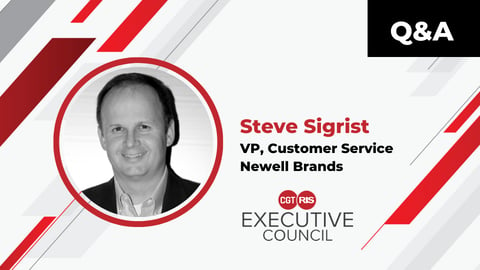CPGs Are Under Pressure. Is Cloud the Relief Valve?
Consumer goods companies were substantially impacted over the past year because of the immense shifts in demand and consumer purchasing patterns. Additionally, CPGs are facing inflation in North America and the need to increase sustainability. Supply chains and manufacturing sit squarely in the center of it all.
For consumer goods C-suite executives, it’s a pressure cooker. On the inflation front, the rising price of raw materials, cost escalations in logistics and transportation, and non-availability of skilled talent creates a host of cost challenges. On the sustainability front, regulatory pressures are increasing; several bills in different U.S. states, if passed, would put the cost of recycling packaging material on the manufacturer. Most companies have yet to figure out how to cover that while also dealing with increasing input costs.
Companies need to find new sources of efficiencies, and one of the key levers would be to look at unlocking value in the way CPG companies manufacture products. Present-day advancements in cloud-enabled technologies can be a relief valve for consumer goods companies; with the right digital technologies and advanced analytics, cloud can drive scale modernization and efficiencies in manufacturing by reducing waste, as well as packaging efficiencies. This level of visibility helps companies address sustainability concerns.
It’s Not an All-or-Nothing Proposition
The best-case scenario is full-scale migration to cloud with digital technologies and advanced analytics throughout the supply chain network, including manufacturing. However, few companies are prepared to do that in one fell swoop.
We are working with some frontrunners who are making that vision a reality. We’re also working with many companies who want to start smaller and proceed in step-stair fashion. These latter companies are prioritizing use cases and scenarios which would yield short-term benefits while establishing the right digital manufacturing foundational capabilities.
Candy Manufacturer Sweetens the Deal
We worked with a candy manufacturer that realized its lack of ability to get real-time data on different production assets and systems was holding it back. Complex, labor-intensive production processes that relied on knowledge passed from worker to worker was hindering consistency.
The company decided to use Microsoft’s Azure Digital Twins IoT service to augment operations across its 160 manufacturing facilities. Through digital twins, it is boosting machine uptime using predictive maintenance while reducing packaging waste due to inconsistent product quantities. In the future, company leaders plan to use digital twin data for better visibility from throughout its supply chain, from product origin to the consumer. Teams are already working on the next set of use cases.
This company is not alone in seeing the value in digital twins. Roughly nine out of 10 executives (87%) agree digital twins are becoming essential to their organization’s ability to collaborate in strategic ecosystem partnerships.
Quality Control and Food Safety
We’re also helping a large food manufacturer ensure its food items are produced at the right temperatures, for quality and food safety. With precision temperature control, the manufacturer can extend production runs, with longer durations before having to stop production to clean machinery.
By pulling data from multiple machines within the cook-stand and centrally managing that data in the cloud via a control center, automatic alerts can notify operators when temperatures, pressures or flow rates vary. Operators can see when a machine is about to stray from specs and make adjustments, so production does not have to stop.
In the digital twin pilot, we’re seeing a 5-10% efficiency savings, with fewer changeovers and less product having to be scrapped. The company stands to save millions of dollars per facility. And this is with a minimally invasive foray into cloud and digital control centers. We’re just touching the tip of the iceberg.
Modernizing Plants Doesn’t Have to be Onerous
Finetuning existing systems with digital and cloud is a viable possibility for so many companies. While efficiency programs are not new in a plant environment, digital manufacturing capabilities powered by cloud infrastructure are the real game changer in terms of capabilities.
Not every change has to be drastic to reap significant savings and better outcomes. Using digital twins to integrate knowledge previously trapped in plant, quality and design siloes, consumer goods companies are making progress on the digital front without breaking the bank — all while creating savings they can use to fuel future digitalization and growth.
That’s the kind of pressure relief valve any consumer goods executive can welcome.
Venkatesh G. Rao (Venky) is managing director and North America consumer goods practice lead at Accenture. He is a member of the CGT/RIS Executive Council.
This content is provided for general information purposes and is not intended to be used in place of consultation with our professional advisors. This document refers to marks owned by third parties. All such third-party marks are the property of their respective owners. No sponsorship, endorsement or approval of this content by the owners of such marks is intended, expressed or implied.






